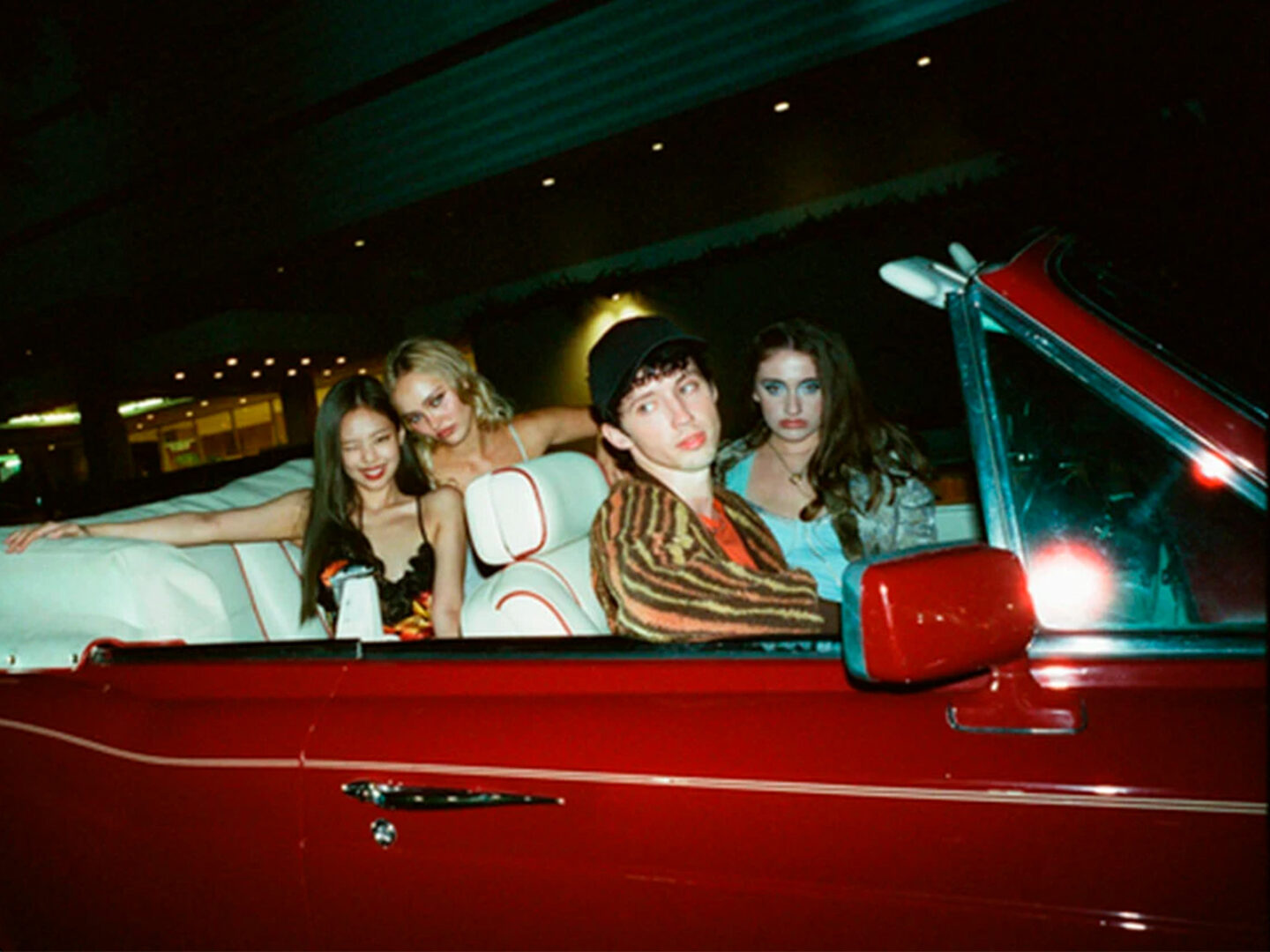The controversial HBO series, beyond having established itself as the most provocative of the year for reasons such as the darkness of Sam Levinson‘s script, and that masculinized vision that runs through all the sequences of the audiovisual piece, there is something that illuminates and shines among all that darkness. And that is fashion, as one of the key creative languages of ‘The Idol’.
Natasha Newman, whose work proliferated from music videos like Childish Gambino’s “This is America”, has built the costumes and defined the aesthetics of the series, of which she has revealed the references that helped her to stimulate that dark fantasy, and to enhance the narrative of each of the characters.

If we put the focus on the protagonist, Jocely -played by Lily Rose Depp- we can see through her character a ‘deified’ representation of a Hollywood star, like Brigitte Bardot, as reflected in one of the first sequences of the first chapter, when she appears in a scarlet red silk gown with embroidered lace. Precisely that ‘unattainable’ and impractical wardrobe, which already appears represented at the beginning of the series, is the one that ends up guiding the construction of all the looks of this pop star with which she maintains that (unreal) status of fantasy. A reference that could be a kind of aesthetic mirage of other Sam Levinson’s audiovisual productions such as ‘Euphoria’.

JOCELYN’S STYLISTIC EVOLUTION
The protagonist’s style evolves throughout the series, conveying through fashion an arrhythmic dance between ’empowerment’ and decadence, as she is manipulated and overruled by both her inner circle and her partner Tedros, portrayed as one of the sleazy characters from the GTA game Miami Vice.
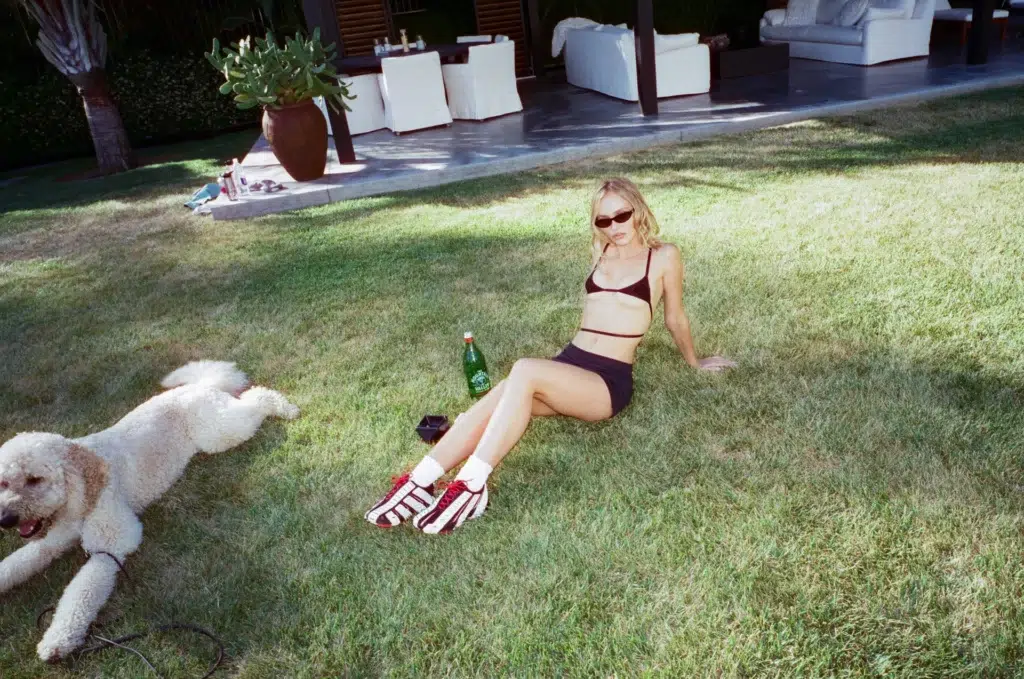
As the costume designer tells i-D, at first, Jocelyn doesn’t take control of her own destiny. It’s not until she realizes her potential that she projects that confidence through her clothes. “There’s definitely a narrative arc that changes after she meets Tedros,” hints Natasha. “We wanted to portray her transformation through clothing and her sensitivity to harnessing power.”
CULT REFERENCES
Natasha Newman dives into the archives of great contemporary designers to rescue some iconic pieces by Valentino, Thierry Mugler or Jean Paul Gaultier, with which she ends up shaping that timeless look of a new superstar with her own identity. Beyond these brands, as Lily-Rose Depp and Jennie are ambassadors for Chanel, the brand gave them a series of jewelry to enhance and embellish Jocelyn’s outfits.
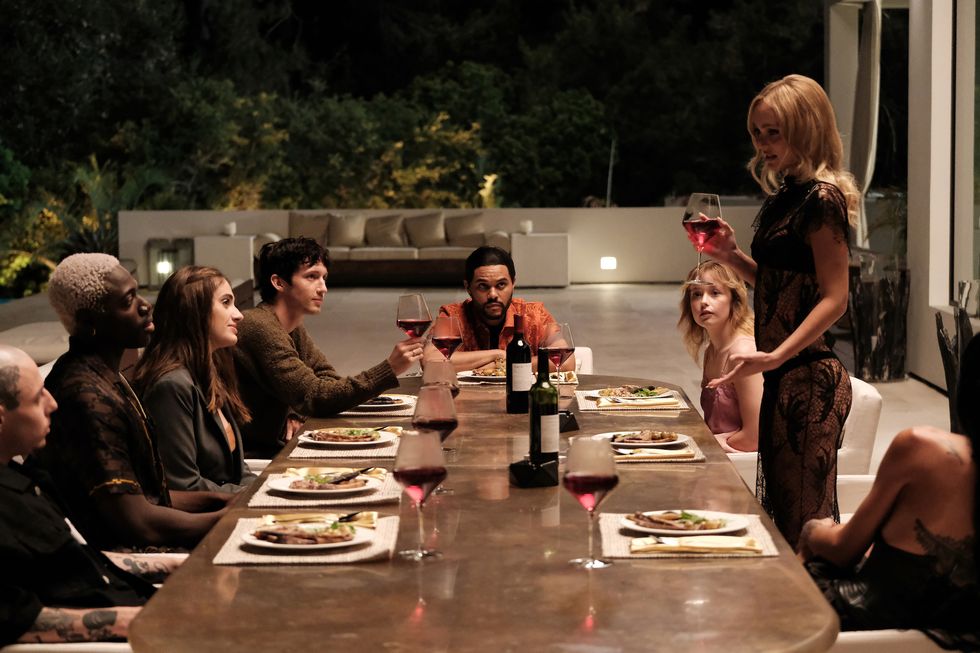
All these haute couture pieces coexist in the same imaginary with vintage designer garments that reflect the tragic story of the star, evoking the style of old Hollywood, as a source of inspiration from which the second chapter of the series draws, especially through garments such as Alexander McQueen pants, custom-made Margiela dresses or Jimmy Choo garments.
Jocelyn’s most exciting look, however, is probably the one in the music video for “World Class Sinner/I’m A Freak,” in which the actress appears in the midst of a panic attack, bloodied in her giddy heels, wearing a gorgeous (and restrictive) fluorescent metallic breastplate by Nusi Quero.
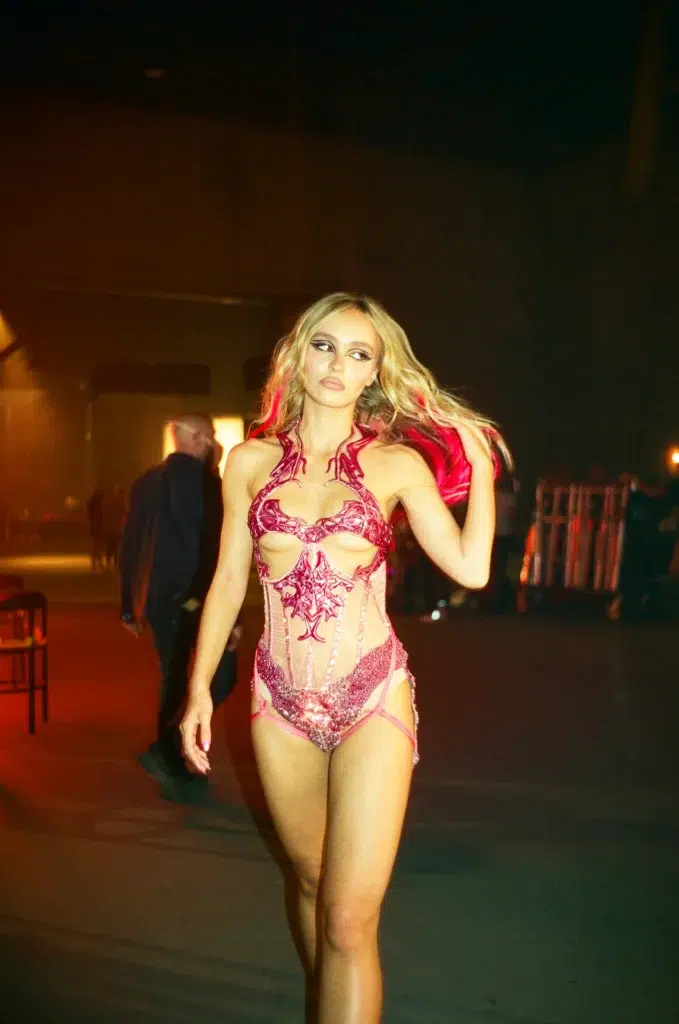
THE HIDDEN MEANING
All the styles projected in the series, which revolve around that cult of personality, and build the visual language of the ‘idol’, become masks of power and beauty that reveal a lot of skin, even the naked body, but hide what really underlies all those looks: distracting attention from who she really is.
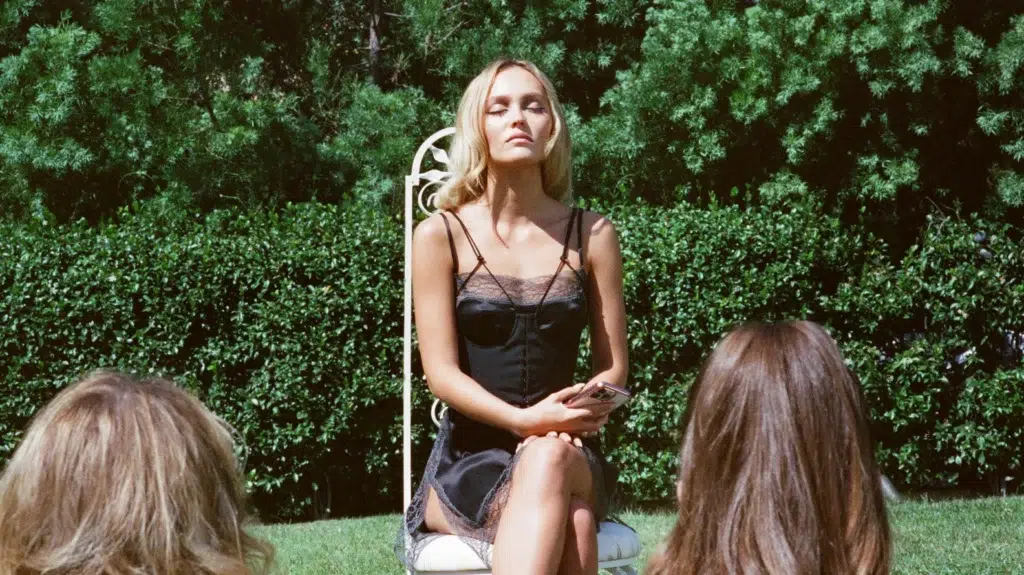
In this sense, fashion in ‘The Idol’ becomes a creative expression that manages to reinforce both the collective narrative of the series and the individual world of these characters who live on the razor’s edge, with clothes that are transformed ‘depending on the changes of power’, foreshadowing the future of each of them.
Sigue toda la información de HIGHXTAR desde Facebook, Twitter o Instagram
